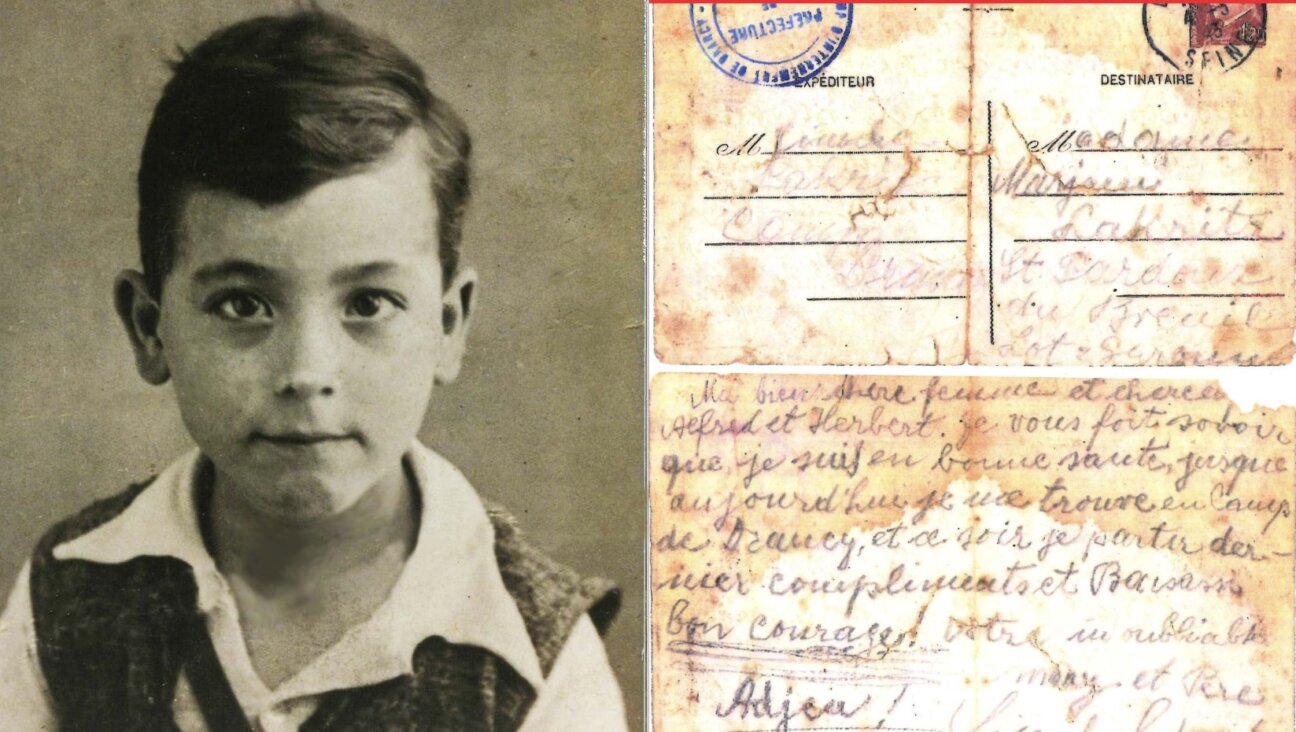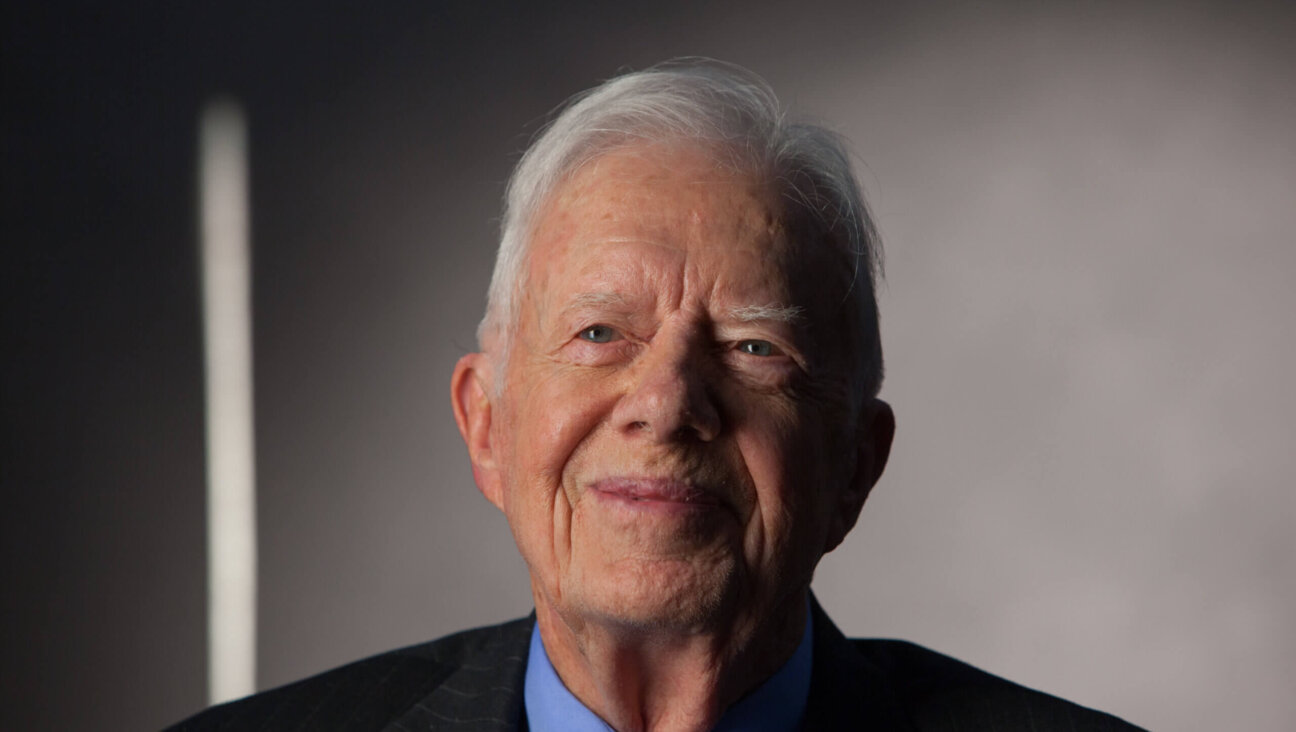How a Yiddish encyclopedia became a document of the Holocaust and Jewish culture

Yiddish Books Museum By shaula haitner Pikiwiki Israel via Wikimedia Commons
“The General Encyclopedia” (Di Algemeyne Entsiklopedye) was a Yiddish language publishing project created in Berlin, Paris, and New York from 1932 to 1966. It was begun optimistically in Berlin to celebrate the 70th birthday of the Russian-Jewish historian Simon Dubnow, who would be murdered in the street by Nazis in Latvia just over a decade later.
Initially planned as an all-embracing reference work, the encyclopedia became a record of the Holocaust and focused on preserving European Jewish culture that had disappeared during the war years. A new study by Barry Trachtenberg, author of previous books on the Holocaust and Yiddish culture, explores how the project was planned and executed. Recently Benjamin Ivry spoke to Trachtenberg about the triumphs and tragedies of the Entsiklopedye:
Benjamin Ivry: The Entsiklopedye was written by eminent Yiddishists, including Max Weinreich, head of the Yiddish Scientific Institute (YIVO); the Hebraist Simon Rawidowicz; and historian Salo Baron. There was also Sholem Schwarzbard, who assassinated the Ukrainian leader Symon Petliura, ostensibly for his role in presiding over anti-Jewish pogroms during the Russian Civil War. The Oxford English Dictionary notoriously enlisted help with definitions from a homicidal inmate at an asylum for the criminally insane, but was the Entsiklopedye the first reference work to employ a sane assassin?
Trachtenberg: I don’t know if Schwarzbard was the first, but when I discovered that he had been a salesman for the Entsiklopedye and died in Cape Town, South Africa, where he was promoting the project, I decided I had to go there. The Entsiklopedye served many functions, and one of them was a make-work project for many of its participants. This was my sense of what happened with Schwarzbard. Elias Tcherikower, who organized Schwarzbard’s defense [in Paris] was also one of the central figures for planning the Entsiklopedye. Schwarzbard’s association lent prestige to the effort. He wasn’t a particularly polarizing figure, certainly not among the Jewish left.
In volume one of the Entsiklopedye, one of the few women granted a biographical article was the English Jewish author Grace Aguilar. Was Aguilar considered acceptable because as a refined invalid, she suited an old style domestic ideal of womanhood, like a Jewish version of Elizabeth Barrett Browning? As opposed to including an article on a revolutionary such as Emma Goldman, for example.
Actually, a contribution on anarchism by Goldman’s associate Alexander Berkman was rejected by the editors for being political. We can only speculate as to the reasons why some subjects were excluded. They put in very obscure male figures sometimes, but only very notable women.
The Entsiklopedye’s chief editor Raphael Abramovitch eked out a living in Berlin as correspondent for the Yiddish Forverts, having been hired by Abraham Cahan when the latter visited Germany. Were most of the Entsiklopedye’s contributors impoverished literati?
[Abramovitch] was paid in dollars and spent his salary in deutschmarks, which was how he was able to survive in Berlin at a time of hyperinflation. Yes, without a doubt, they were all schlepping for income, working as journalists, authors and teachers, trying to start new ventures to live off their intellectual labors, but it was extraordinarily difficult at the time. Part of the reason why there were so many contributors on the spectrum between the Communists on the left and Zionists on the right was that the editors were trying to extend employment opportunities to so many of their political comrades.
In 1946, the volumes on “The Jewish People: Past and Present” began appearing, an English-language presentation of aspects of Jewish life. An older article on “The Anthropology of the Jewish People” was silently revised by Claude Lévi-Strauss, while Gershom Scholem was irked when his “Jewish Mysticism and Kabbala” article was translated and reprinted without his permission. Why do you suppose that Lévi-Strauss labored in humble anonymity while Scholem was worried about his author’s rights?
Lévi-Strauss happened to be in exile in New York, so they paid him $25 to revise a rather antiquated article. It’s interesting that Scholem was so upset about his author rights. The date on his letter of protest was June 5, 1945, and it’s fascinating that anyone would be giving time and attention to this issue at that historical moment. I think he felt rightfully protective of the works that would appear under his name.
“The Holocaust & the Exile of Yiddish” reproduces an illustration of Easter Island, renamed Passover Island (Peysekh-indzl). Was this standard Yiddish terminology?
I use this image a lot in presentations because it is a light moment in a not always light subject. In common Yiddish parlance, I have been assured, Peysekh is used as a substitute term for Easter, with an etymological reference to the Paschal lamb, so it may not have just been for laughs, as I believed at one time.
You point out that in 1968, after the last Entsiklopedye volume appeared, Leo Rosten’s best-seller “The Joys of Yiddish” annoyed some scholars as an “assortment of lowbrow and off-color jokes.” Because of when the Entsiklopedye appeared and the difficulties involved, did it memorialize a culture without the wit and humor inherent in the Yiddish language? After all, it reproduces “Jeremiah,” a painting by the German Jewish artist Lesser Ury of the Bible’s “weeping prophet.” This tragic aura evokes what Salo Baron called the “lachrymose conception of Jewish history” seen in books by Heinrich Graetz and Leopold Zunz.
After Peysekh-indzl, there’s not a whole lot [of humor in the Entsiklopedye]. I think the notion that Yiddish is defined by lightness and off-color jokes was not a priority for the Entsiklopedye editors, given their circumstances. The threads of humor that run through Yiddish culture, present in European Yiddish cinema and theater, reached some of their greatest heights in America. So in the 1960s, when people started to rethink the possibilities of Yiddish, that’s what they looked to, because they were looking forward. But so many older Yiddishists had already passed on by then and those remaining were thinking about preserving their legacy and creating an archive of their own demise.
Ben Zion Goldberg, an editor at the New York Yiddish daily “Der Tog” (The Day), compared the Entsiklopedye project to the creation of YIVO, about which some people scoffed that Yiddish was better suited for the marketplace than academia. Goldberg concluded: “I believe in the encyclopedia.” Did the project require belief, as in a deity, to be completed?
I’m not sure it required belief at the level of a deity, but they certainly saw the project as a spiritual mission, even for this group of secular Jews. Yiddish was coming into its own as a language of modern thought and they had been instrumental in bringing this about during their youth. The encyclopedia was going to be their final great accomplishment. There was an enormous sense of responsibility and dedication, even after the project no longer made economic sense. They fled as refugees with as much of the project as they were able to carry en route, since they saw these remnants as the building blocks for a revitalized Yiddish culture.
A message from our Publisher & CEO Rachel Fishman Feddersen

I hope you appreciated this article. Before you go, I’d like to ask you to please support the Forward’s award-winning, nonprofit journalism so that we can be prepared for whatever news 2025 brings.
At a time when other newsrooms are closing or cutting back, the Forward has removed its paywall and invested additional resources to report on the ground from Israel and around the U.S. on the impact of the war, rising antisemitism and polarized discourse.
Readers like you make it all possible. Support our work by becoming a Forward Member and connect with our journalism and your community.
— Rachel Fishman Feddersen, Publisher and CEO























